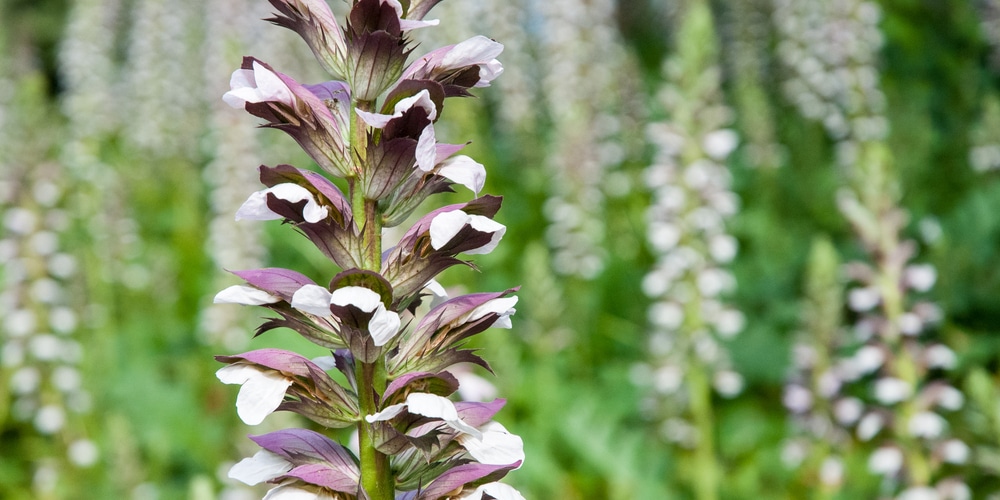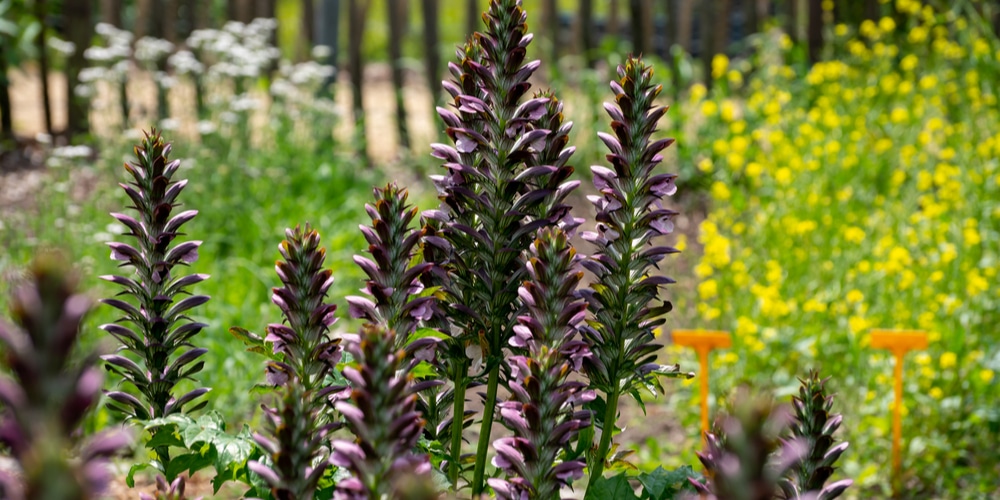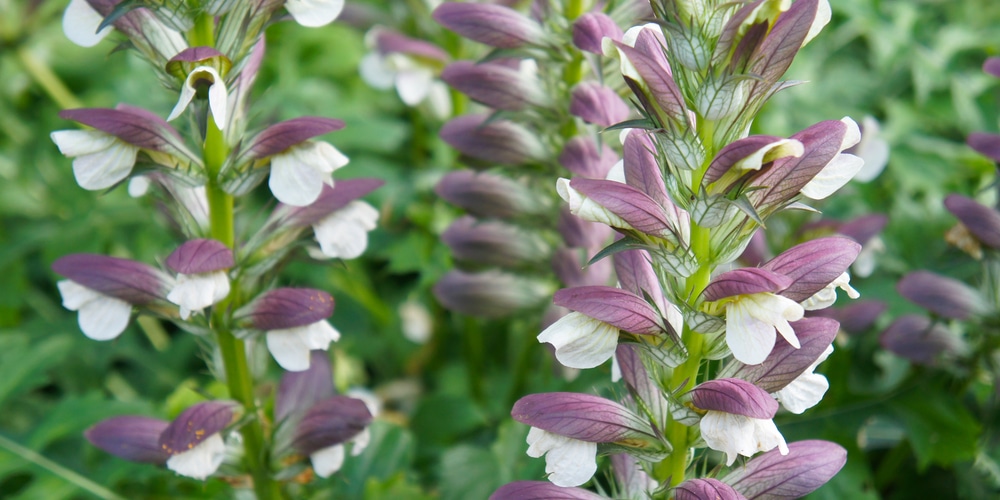Acanthus Mollis is a dark leaved plant with beautiful, lobed foliage. The plant is a large-leafed perennial that can grow up to five feet tall. Plants prefer filtered sunlight or part shade and are easy to care for as long as you get the basics right. Let’s look at how to grow and care for a thriving Acanthus Mollis plant.
What is an Acanthus Mollis plant?

Acanthus Mollis is a type of plant in the Acanthaceae family. They are often referred to as bear’s breeches or oyster plants. The flowers are tall and are white, lavender, and pink. These plants are native to Europe and are particularly common in Mediterranean regions. The leaves were often depicted in Greek architecture.
Acanthus Mollis has large leaves measuring between 2 to three feet wide. They make a great addition to any yard and can provide ground cover for smaller shade loving plants. They can also be used in landscaping projects such as flower borders. These plants are commonly grown in USDA zone 5 to 9. They are fairly cold hardy and can also cope with warm summer weather.
Acanthus Mollis Care

Acanthus mollis care starts with planting in a sheltered area where the roots will not freeze. In USDA zones 5-9, you can keep your acanthus Mollis outdoors in the ground, mulching over the winter to protect the roots. In colder zones, you will need to dig up your plant and store it in a pot over the winter, bringing it back outside when all danger of frost has passed.
Here are some tips to help you grow a healthy and thriving Acanthus Mollis plant in your yard:
Sunlight needs
Acanthus Mollis prefers dappled sunlight or part shade in hotter climates. In slightly cooler areas, it can be grown in the full sun. Be careful not to leave your plant in the scorching sun for too long, or its leaves may get sunburnt.
Fertilization
Acanthus Mollis are not heavy feeders but do best with a good quality, all purpose plant food. They require fertilizer in the spring when they have just come back into growth, so consider adding a little extra fertilizer to help with the new shoots and blooms. Most gardeners recommend fertilizing Acanthus Mollis plant twice a year.
Watering requirements
When growing Acanthus mollis, it is important not to overwater or underwater your plants. Please keep them in organically rich, moist soil but never allow them to sit in water, or root rot may occur. If you think your plant is suffering from root rot, you can treat the roots with a fungicide.
It’s worth watering your plant well in the first year to allow it to become well established. You can also add a layer of mulch to the topsoil during the summer months to help keep moisture in the soil. This is particularly beneficial in warmer climates where water can quickly evaporate as soon as you water your plant.
Pruning
Acanthus plants can be cut back by half at any time during the year if they get too large. You can also prune the plant slightly to remove dead or damaged flowers, leaves, and stems.
If you have your plant in a pot that you plan to overwinter, then leave them until just before you put them back outside in the spring to prune.
Soil type
Acanthus Mollis plants prefer organically rich, moist soil but can adapt to most soil conditions. They do not like dry, sandy soil, so if you have a problem with that, then amend the soil before planting. It’s also essential to ensure that the soil is well-draining as the plant’s roots will rot if the soil becomes waterlogged.
Acanthus Mollis plants prefer soil that has a pH range of between 6 and 7. This is either neutral to slightly acidic. However, the plants are fairly forgiving if your soil range falls slightly out with this range.
Propagation
One of the easiest ways to propagate acanthus plants is via division. You can divide them at any time during the year, but spring and early summer are best. Take a sharp knife and carefully cut through big clumps, cutting out parts with at least two to five leaves.
Pot up your divisions and keep moist until you see signs of growth again. If you want to reproduce using the flowers, remove spent blooms and place them in water. You can then root these cuttings in the same way you would with any other type of plant.
It’s also worth noting that the Acanthus mollis can become slightly invasive and will spread once it’s planted. It can be hard to get rid of the plant as it will regrow again from a small piece of root after being removed. For this reason, many people consider the Acanthus mollis as a weed.
Acanthus Mollis: Common Pests and disease

Acanthus mollis plants aren’t affected by pests very but do attract snails and slugs. They can also suffer from fungal infections such as powdery mildew. The flowers will attract beneficial wildlife such as bees, butterflies, birds, and insects to your yard. For this reason, Acanthus mollis plants make a great attrition to a wildlife garden or flower garden.
Conclusion
Acanthus mollis is a beautiful, easy-to-care-for plant that can be grown in most parts of the country. With a little TLC, your acanthus will provide you with years of enjoyment and beautiful flowers throughout the spring and summer months.
Plant your Acanthus mollis plant in a location that gets the morning sun and partial shade for the rest of the day if you live in a hot climate. In cooler areas, your plant will happily grow in the full sun.
Ensure that you water your plants regularly, but don’t overwater or root rot may occur. You can also fertilize twice annually to help your plant thrive, but you should be aware that Acanthus Mollis is fairly invasive and can spread and become hard to get rid of. If you like Acanthus mollis, you really might like Acanthus whitewater.
Related: Never Never Plant